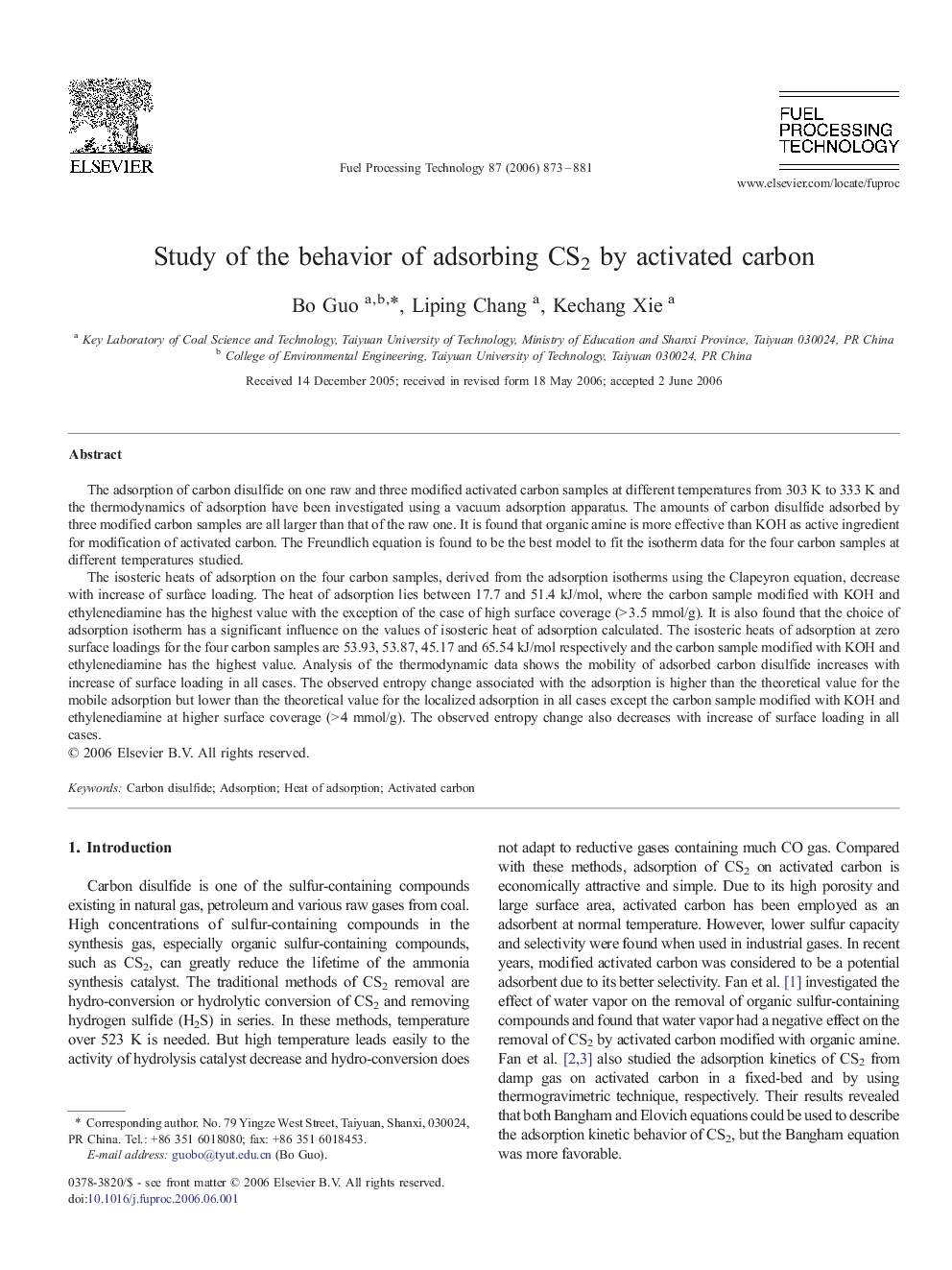| Article ID | Journal | Published Year | Pages | File Type |
|---|---|---|---|---|
| 211280 | Fuel Processing Technology | 2006 | 9 Pages |
The adsorption of carbon disulfide on one raw and three modified activated carbon samples at different temperatures from 303 K to 333 K and the thermodynamics of adsorption have been investigated using a vacuum adsorption apparatus. The amounts of carbon disulfide adsorbed by three modified carbon samples are all larger than that of the raw one. It is found that organic amine is more effective than KOH as active ingredient for modification of activated carbon. The Freundlich equation is found to be the best model to fit the isotherm data for the four carbon samples at different temperatures studied.The isosteric heats of adsorption on the four carbon samples, derived from the adsorption isotherms using the Clapeyron equation, decrease with increase of surface loading. The heat of adsorption lies between 17.7 and 51.4 kJ/mol, where the carbon sample modified with KOH and ethylenediamine has the highest value with the exception of the case of high surface coverage (> 3.5 mmol/g). It is also found that the choice of adsorption isotherm has a significant influence on the values of isosteric heat of adsorption calculated. The isosteric heats of adsorption at zero surface loadings for the four carbon samples are 53.93, 53.87, 45.17 and 65.54 kJ/mol respectively and the carbon sample modified with KOH and ethylenediamine has the highest value. Analysis of the thermodynamic data shows the mobility of adsorbed carbon disulfide increases with increase of surface loading in all cases. The observed entropy change associated with the adsorption is higher than the theoretical value for the mobile adsorption but lower than the theoretical value for the localized adsorption in all cases except the carbon sample modified with KOH and ethylenediamine at higher surface coverage (> 4 mmol/g). The observed entropy change also decreases with increase of surface loading in all cases.
